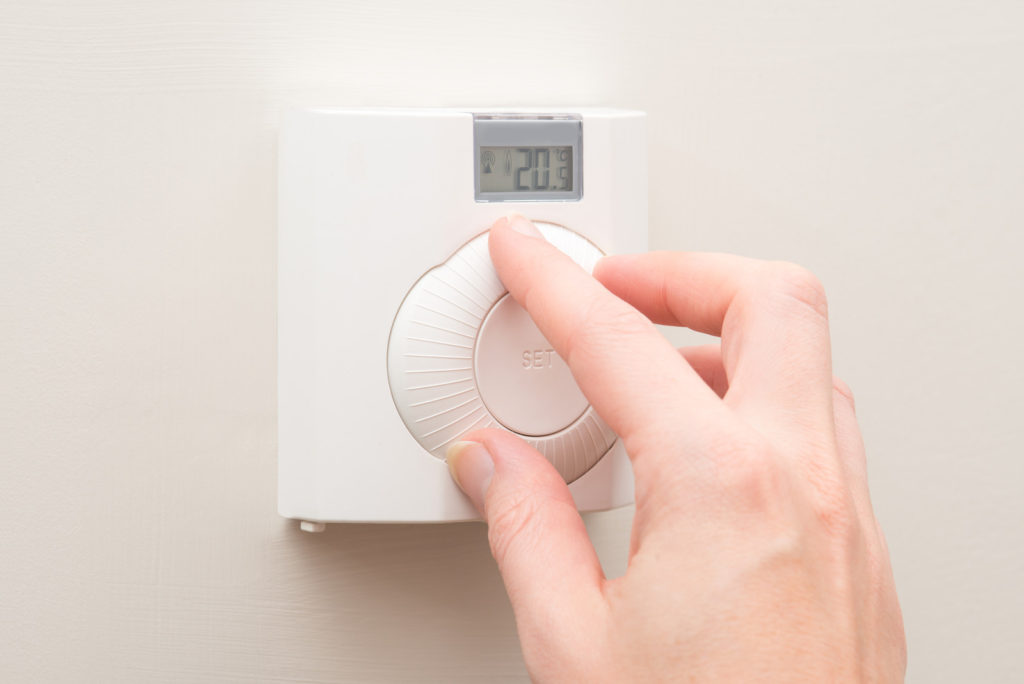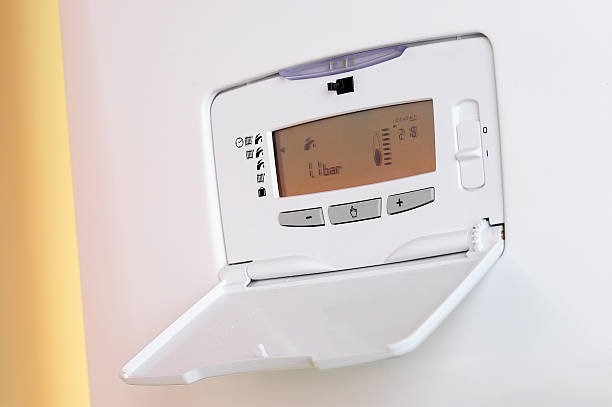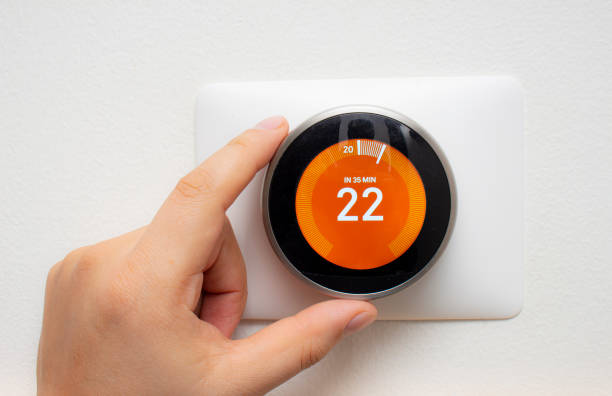A thermostat is a device that controls the temperature in your home by communicating with your heating system. A boiler heats water to provide heat to your home. Together, a thermostat and a boiler work in harmony to keep your home at a comfortable temperature all year round.
How a Thermostat Works with a Boiler
When you set your thermostat to a certain temperature, it sends a signal to your boiler to turn on or off. This communication is typically done wirelessly or through a series of wires that connect the two devices. The thermostat tells the boiler when to start heating and when to stop, based on the temperature you have set.

Types of Boilers and How They Work with Thermostats
Conventional Boilers
Conventional boilers heat water that is stored in a tank, and then pump the hot water through radiators to heat your home. Conventional boilers work with thermostats in the same way as described above – the thermostat sends a signal to the boiler to turn on or off based on the temperature you have set.
Combi Boilers
Combi boilers combine both heating and hot water production in one unit. They don’t require a separate hot water cylinder, which makes them more space-efficient.
Combi boilers also work with thermostats in the same way as conventional boilers – the thermostat sends a signal to the boiler to turn on or off based on the temperature you have set.
System Boilers
System boilers are similar to conventional boilers, but they have a few key differences. They don’t require a separate hot water cylinder, and they include a pump and a valve that help to distribute the hot water more efficiently.
System boilers also work with thermostats in the same way as conventional boilers – the thermostat sends a signal to the boiler to turn on or off based on the temperature you have set.
How to Check if a Boiler Thermostat is Working
There are a few ways to check if your boiler thermostat is working properly. Here are a few steps you can take:
- Check the temperature on the thermostat: Make sure that the temperature on the thermostat is set to your desired level. If the temperature is not set correctly, the boiler may not turn on or off as it should.
- Check the temperature in the room: Use a thermometer to check the temperature in the room where the thermostat is located. If the room temperature is not the same as the temperature on the thermostat, the thermostat may not be working properly.
- Check the boiler: Turn the thermostat up and listen for the boiler to turn on. If the boiler does not turn on, the thermostat may not be working properly.
- Check for error codes: Some thermostats have digital displays that can show error codes. If your thermostat has an error code, it may indicate a problem with the thermostat.
What Should be the Temperature on a Boiler Thermostat?

The recommended temperature for a boiler thermostat is typically between 15-21 degrees Celsius. This temperature range is comfortable for most people and can help to reduce energy usage.
However, it’s important to note that the temperature on your thermostat should be adjusted based on your personal preferences and the specific needs of your home. For example, if you have a large home or a lot of windows, you may need to set the temperature higher to keep it warm.
It’s also important to consider the time of year and the weather outside. During the colder months, you may need to set the temperature higher to keep your home warm. During the warmer months, you may want to set the temperature lower to save on energy costs.
It’s also recommended to use a programmable thermostat that allows you to set different temperatures for different times of the day, so you can set the temperature lower when you’re not at home and higher when you are.
How to Replace a Boiler Thermostat with a Smart Thermostat

If you’re looking to upgrade your boiler thermostat to a smart thermostat, here are the steps you’ll need to take:
- Purchase a smart thermostat: Choose a smart thermostat that is compatible with your boiler.
- Turn off power: Before installing your new thermostat, turn off power to your boiler to ensure safety.
- Remove the old thermostat: Remove the old thermostat by carefully disconnecting the wires from the thermostat.
- Install the new thermostat: Follow the manufacturer’s instructions to install the new thermostat. Connect the wires to the new thermostat in the same way as they were connected to the old thermostat.
- Test the thermostat: Turn the power back on and test the thermostat to make sure it is working properly.
- Connect to Wi-Fi: Follow the manufacturer’s instructions to connect your smart thermostat to your home Wi-Fi network.
- Set up the App: Download the app provided by the manufacturer and set up your smart thermostat.
- Enjoy the benefits: Once your smart thermostat is installed and set up, you can control your heating remotely, set schedules, and enjoy other features such as energy monitoring.
If you’re unsure or having trouble setting the new thermostat up, consult the manufacturer’s instructions or a professional before replacing the thermostat.
Summary
A thermostat and a boiler are two essential components of a home heating system. A thermostat controls the temperature in your home by communicating with your boiler, and together they work to keep your home at a comfortable temperature all year round. Regardless of the type of boiler you have, the thermostat will work in the same way to control the temperature in your home.
